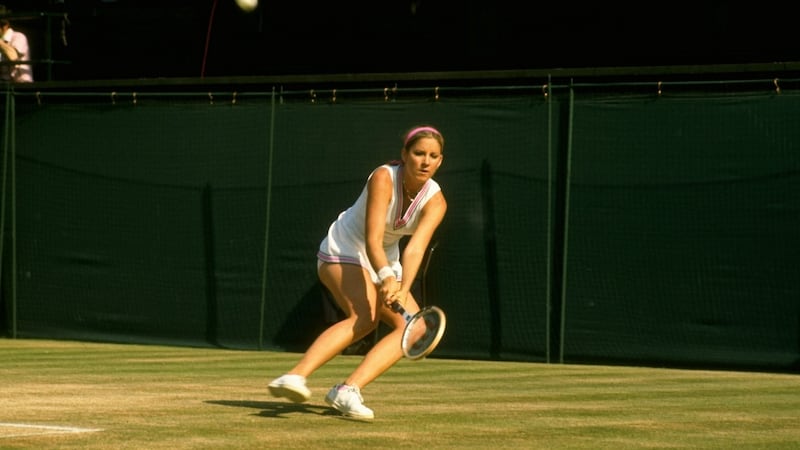The 1971 US Open was the first time the world glimpsed the power of Christine Marie Evert. She was 16, a prodigy who struck her backhand with two hands and had built her name that year with a junior and senior winning sequence across 45 matches. Clay was her surface of choice so the grass courts of the US Open seemed a challenge too far. Instead, she embarked on one of the sport's most celebrated breakthroughs.
As she marched through the draw, three times recovering from a set down to reach the semi-finals, pandemonium reigned. Fans shook the Forest Hills stadium, cheering the errors of her foes and tossing beer cans into the sky. The press scrambled to find the perfect moniker so she was dubbed “Cinderella In Sneakers”, “Ice Princess” and “America’s Sweetheart” all in one breath. When she stood triple match-point down in the second round before mounting a miraculous recovery, little girls in the stands cried.
The run ended in the semi-final against the one person who deeply understood how it felt to be in the eye of such a storm: "I hope she enjoys it because her life will change abruptly," Billie Jean King said. "Her life already has changed. She has no privacy any more. She belongs to the public."
One year earlier King had led a small group of the best female players as they broke away from the men to establish a new independent tour. They were determined to command a fairer share of the financial pie and they believed players on the Virginia Slims tour had the athleticism and talent to deliver. However, King was always cognisant of the world around her so they showed up to the press in full makeup and were all dressed on-court by the fashion designer Ted Tinling. Part of the success story of women’s tennis has always been its cynical use of glamour to appeal to more fans.
Figurehead
In that sense Evert arrived on the scene as the perfect future figurehead. By 1974 she was the best player in the world after her French Open and Wimbledon titles. She also happened to be a white, blonde and attractive all-American gal and quickly became one of those rare people to transcend the sport. She endorsed everything from Rolex to cheese and her popularity helped to drive the 1970s US tennis boom.

“She is quite taken with fashion people and actresses and the entertainment life,” her friend Kristien Shaw-Kemmer told Sports Illustrated in 1976. “But if she ever stopped to think how much more famous she is than all of those people, she might faint.”
The greatness of Evert’s career is that her celebrity never overshadowed her success. When she arrived, three of the four grand slam tournaments were played on grass, where the ball skidded low and matches were a race to the net. She played on the home turf of serve and volley players yet she beat them all, pinning them behind the baseline and turning her matches into groundstroke battles nobody else could win.
Her game was sometimes derided as unspectacular, with most compliments centred on her unwavering focus and consistency, but that belied the quality of her groundstrokes. Between her peerless two-handed backhand, her ability to find a passing shot from any part of the court and her command of the baseline, her success would begin the quiet revolution that has helped to shape the modern game.
Peerless
Evert’s peerless stats alone give her a seat at the table. She won 18 grand slam titles, including seven French Opens and six US Opens. She was marked as the year-end No 1 seven times with 157 singles titles and reached grand slam semi-finals 52 times in 56 attempts. Her win-loss record of 1,309-146 (90 per cent) and her absurd 125-match winning run on clay between 1973 and 1979 will never be surpassed.
Her numbers would be even stronger had players made the four grand slam tournaments the priority they do now. Evert missed the French Open between 1976 and 1978 in the midst of her clay run and the best years of her career and, despite reaching the final each time, she travelled to the Australian Open only six times in her 19 seasons.

As time has passed Evert’s success has become slightly underrated. Among many reasons, it is because her name will always be synonymous with Martina Navratilova’s. While they aptly ended their careers with 18 grand slam titles each, Navratilova finished their head-to-head contest with a 43-37 lead and dominated the second half of their 80 meetings, moulding the sport in her image as players, including Evert, raced to the gym in order to keep up.
Evert’s legacy seemed far less significant during the height of her powers. By the time almost every player in the world was gripping their racket with two hands and intent on ruling the baseline, she was long retired. It is only now we can look at the way tennis is played and appreciate the role she had in bringing it to the masses and her enduring influence within the sport. That is some power.
Roll of honour
18 grand slams singles titles Australian Open 1982, 1984 French Open 1974, 1975, 1979, 1980, 1983, 1985, 1986 Wimbledon 1974, 1976, 1981 US Open 1975, 1976, 1977, 1978, 1980, 1982 135 WTA tour singles titles - Guardian














